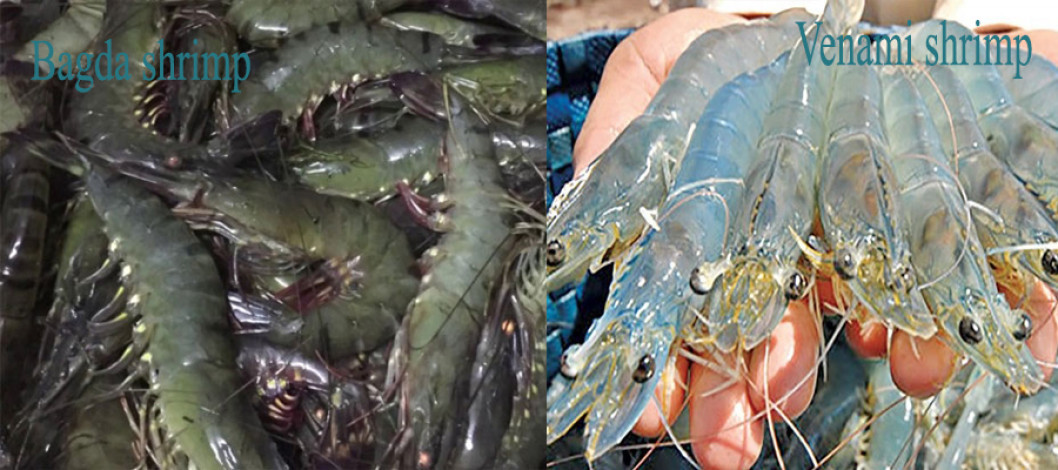
File Photo
Bangladesh's frozen food exporters say the Russia-Ukraine war
has reduced demand as well as prices. On the other hand, the cultivation of
Venami shrimp, a high-yielding variety of shrimp, has not fully started. Most
of the shrimps currently exported from various countries are Venami. As a
result, the export of frozen shrimp naturally decreased.
In such a context, how did India increase Bagda exports, why
Bangladesh could not - let's find the answer to that question. Before that, it
is better to say that India's export of frozen shrimp is more than 500 crore
dollars. Most of them are Venami. However, their exports of Venami prawns fell
by 8 percent to $ 481 crore in the last financial year.
The highest shrimp export from Bangladesh was 55 crore dollars
in the 2013-14 fiscal year. Then the export of the product decreased for seven
consecutive years. After Corona, shrimp exports worth 41 million dollars in
fiscal year 2021-22. The growth is 23.84 percent. In a gap of one year, the
export of shrimp has again gone into a negative trend. Although the government
has been providing cash assistance of up to 10 percent over the years to export
the product.
Exports of Bangladesh are very small compared to the global
shrimp market. According to OEC World, an internationally recognized business
and economic database, in 2021, shrimp exports were worth 2203 crore dollars
from different countries around the world. Ecuador exported the highest 23.9
percent of it. Then India exported 23.5 percent, Vietnam 10 percent, Indonesia
6.75 percent, and Argentina 5 percent. Bangladesh's shrimp export share was one
and a half percent that year.
On the other hand, according to the information of the
International Trade Center (ITC), in 2022, Ecuador exported the most 11 lakh 41
thousand metric tons of shrimp. Then India exported 7 lakh 4 thousand and
Vietnam 3 lakh 79 thousand metric tons of shrimp. And Bangladesh exported only
25 thousand metric tons.
In Bangladesh, shrimp farming is done in Khulna, Bagerhat,
Satkhira, Patuakhali, Barguna, Chittagong, Cox's Bazar, Noakhali, and
Mymensingh. There are 108 shrimp processing factories for export. Among them,
30-35 factories produce regularly. However, due to a lack of raw materials,
none of them are able to run production at full capacity.
What is the solution then Venami?
Exporters have been negotiating with the government for a long
time for permission to cultivate Venami shrimp in the country. However, the
Department of Fisheries did not encourage or permit the cultivation of Venami
in the beginning on the grounds that it could have an adverse effect on the
environment. Finally, in September 2019, the government allowed experimental
shrimp farming. Due to Corona, it also got delayed. In 2021, experimental
cultivation of Venami shrimp was started at the brackish water research center
located in Paikgacha upazila of Khulna. Later last year, eight institutions
cultivated Venami experimentally.
After successful experimental farming, the government decided to
allow commercial production of this high-yielding variety of shrimp this year.
So far three institutions have received permission to cultivate Venami
commercially. In that continuation, the Department of Fisheries also gave
experimental permission to an organization in Khulna to produce Venamir fry.
Since two decades ago, the popularity of Venami Prawns has been
increasing worldwide due to its cheaper price. Venami accounts for 77 percent
of all shrimp exported worldwide.
Amin Ullah, former president of the Frozen Food Exporters
Association, said, 'It took 5-10 years for India to succeed in Venami. As a
result, we should not hurry. Banks should come forward to provide capital to
farmers to make Venami farming a success. Currently, Bagda cultivation takes
1-2 lakhs per acre. Venami should be done in a semi-incentive manner. It will
require at least Tk 10 lakh per acre.
Why is Baghdad falling behind?
In India, 1.75 lakh hectares of land are cultivated for shrimp.
Production is 8 lakh metric tons. On the contrary, in Bangladesh, 2 lakh 62
hectares of land are cultivated for shrimp. Production of 1 lakh 37 thousand
metric tons of shrimp. That means India's production is more than six times
higher than Bangladesh's, despite cultivating much less land.
MU Sea Foods of Jessore has been in the frozen shrimp business
for three and a half decades. In the last financial year 2020-21, the company
exported frozen shrimp worth 1 crore 10 lakh dollars. By the end of the year,
it had dropped slightly to $ 1 crore.
Shyamal Das, managing director of MUC Foods, said, "Most of
India's frozen shrimp exports are Venami." Still, Bagda cultivation has
been increased in Gujarat for two years.
As a result, they are able to deliver five tons of Bagda in a
20-ton Vanami container according to the customer's demand. They are leading
because of diversified products. And we are falling behind.
Shyamal Dash also said, "In order to survive in Bagda
exports, production costs must be reduced. Before the war, a pound of shrimp
(headless 16-20 piece shrimp) cost $14.50. Now $11 is not worth more than 20
cents. There is no alternative to using modern technology to increase production.
Apart from that, the chicks available in hatcheries in India
have good health and less disease. In order to turn around in our export of
frozen prawns, we need to take effective initiatives to ensure the supply of
quality prawns besides increasing the use of technology.
Source:
Online/GFMM
Comment Now